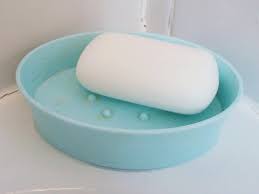How does soap act against dirt and bacteria?« Back to Questions List
|
The global hand wash day is held every year on October 15th in order to create awareness about the importance of washing our hands with soap. Let us understand how the soaps help us get rid of bacteria and dirt. Soaps are made by combining acids and bases. The fatty acids form the acids and sodium hydroxide or potassium hydroxide (salt) forms alkali or base. Therefore we say soaps are salts of fatty acids. Generally fats and oils are made of triglycerides (three molecules of fatty acids attached to single molecule of glycerol). During the process of making soap, the mixture of fatty acids with the base causes the fatty acids to separate from triglycerides and fuse with hydroxide ions to form soap. If molecules in an object floating on water are attracted to water molecules, they are called hydrophilic and if they do not bond well with water they are called hydrophobic components. Examples of hydrophilic substances are salts and sugar and that of hydrophobic substances are fats and oils. Molecules in a fluid have mutual attraction for each other and the effect creates a natural resistant force called surface tension. Coming back to soaps, it decreases water’s surface tension and binds with dirt, oil and bacteria. This is because soap molecules have both hydrophobic and hydrophilic substances. The hydrophilic part allows the hydrophobic substances like the fatty acids and oil or dirt on the surface to be cleaned to come into contact and become enclosed within the water droplets. Thus the dirt and bacteria get easily scrubbed off when they get washed. How does mould cause black spots on wet cloths and fruits?What is chemosynthesis? How does it aid food production? |

